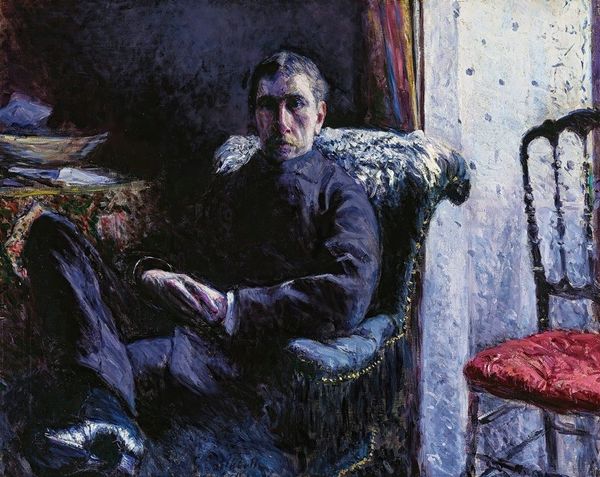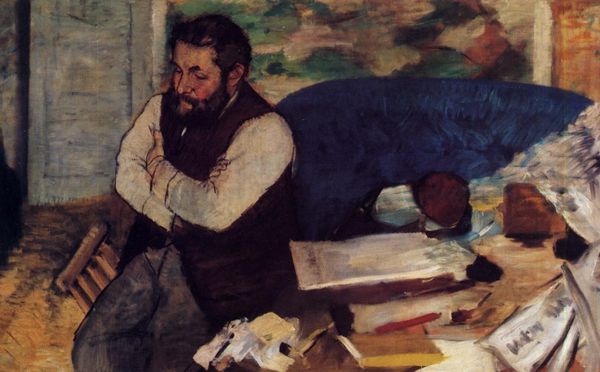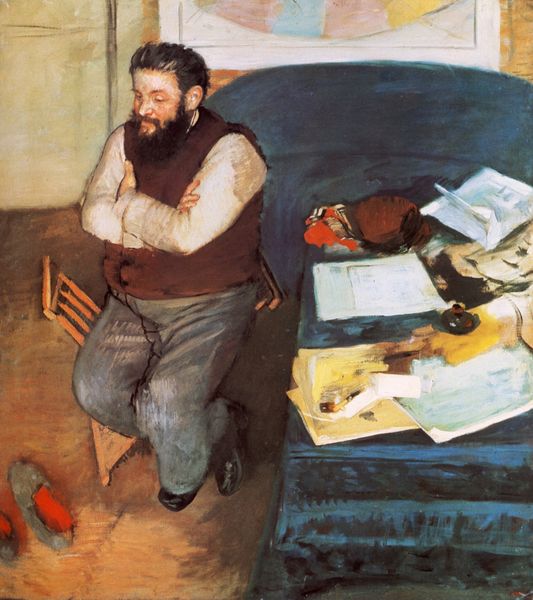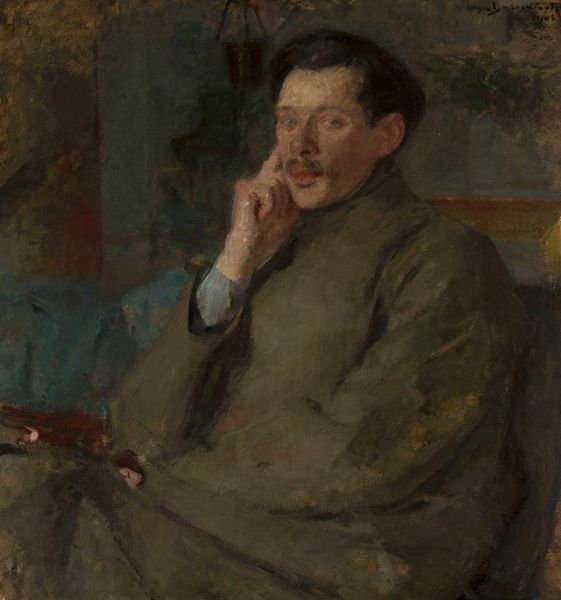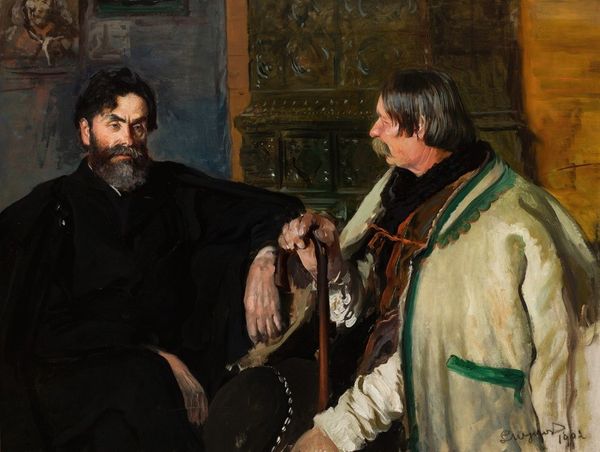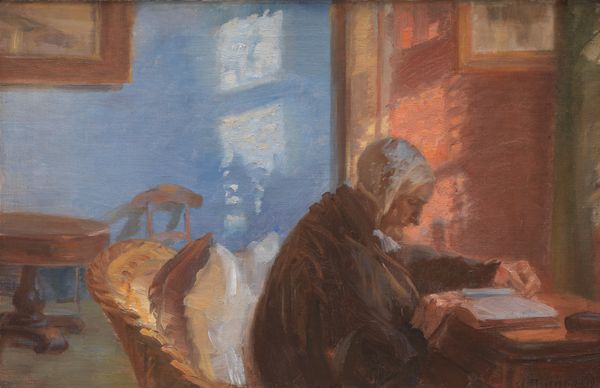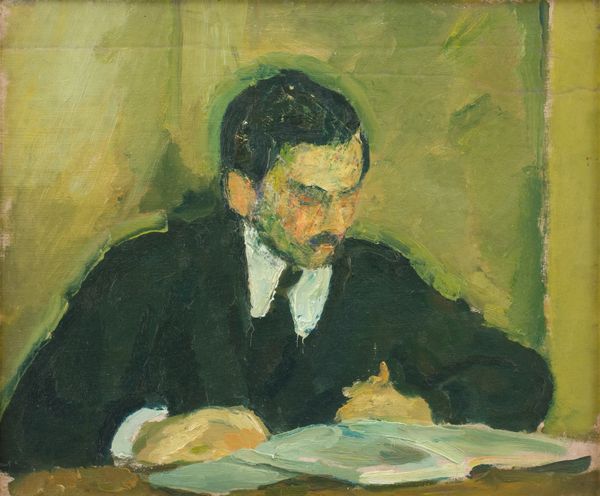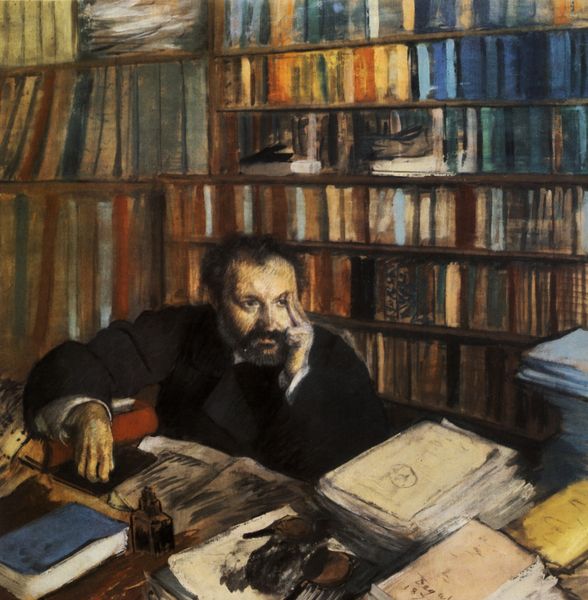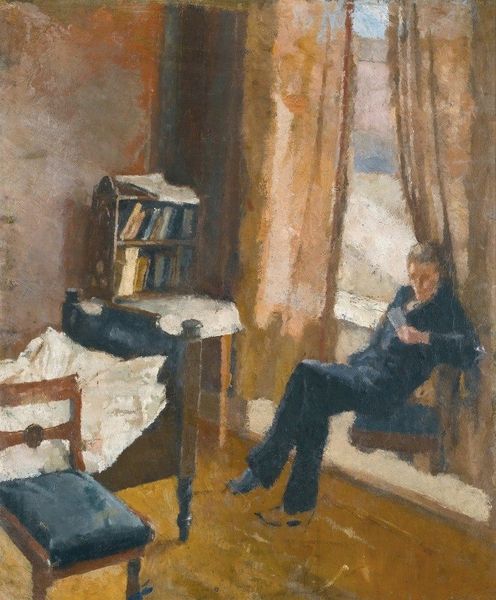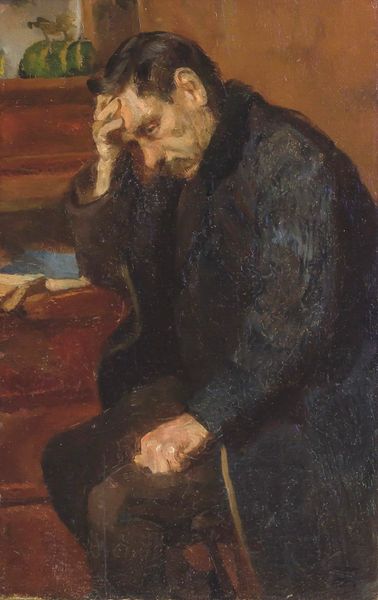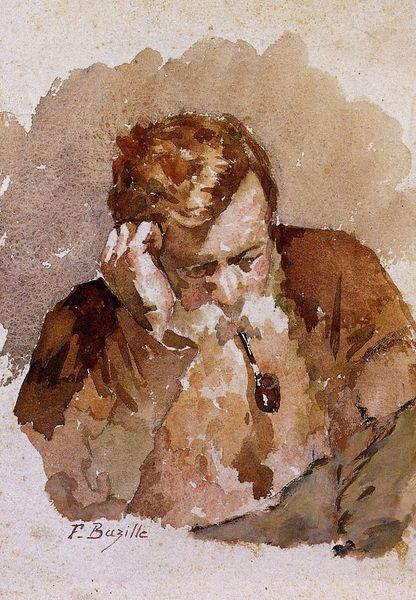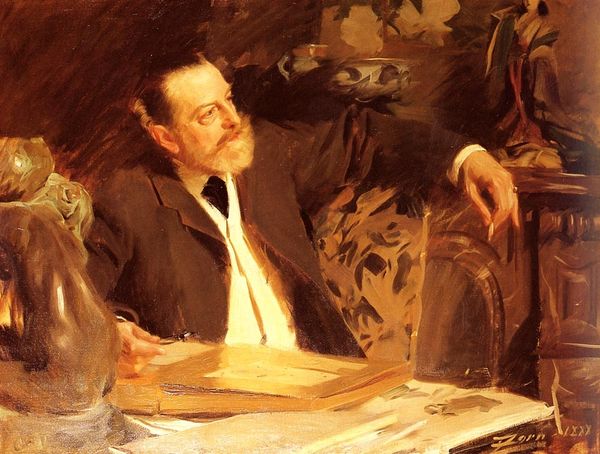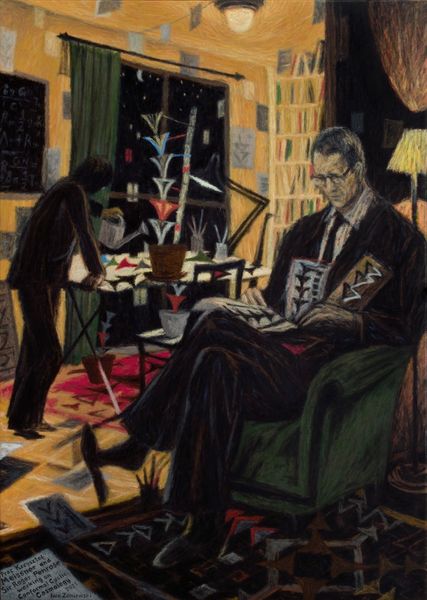
painting, oil-paint
#
portrait
#
painting
#
impressionism
#
oil-paint
#
oil painting
#
genre-painting
Copyright: Public domain
Curator: Renoir’s “Portrait of Edmond Maître,” completed in 1871 using oil paints, captures its subject in a moment of quiet concentration, a rather intimate glimpse into bourgeois life of the period. Editor: The first thing I notice is the pervasive darkness, broken only by diffused light—it feels somber, as if the act of reading were presented as a weighty endeavor. The floral wallpaper, however, adds an interesting layer of domesticity. Curator: I'm struck by how the wallpaper contrasts the reader’s dark attire, almost as though to reflect a separation between nature, decoration, and modern society. And isn’t there something profoundly symbolic in observing the placement of these motifs next to a learned subject? The act of reading, itself, implies a process of encoding and decoding… Editor: Are we seeing a subtle comment on class divisions here? I mean, is the laboring class "imprinted" and the bourgeois "read" in a visual statement by Renoir, considering this portrait coincides with the Paris Commune? Curator: That’s a powerful claim, but let’s not overlook the potential for personal meaning embedded in Renoir's imagery. Maître was a close friend. Maybe the artwork simply aims at a celebration of their shared intellectual pursuits. Think of the psychological implications here; books carry knowledge, offering liberation and expanding one's comprehension of the world... Editor: But the Impressionists were never detached from their milieu, so let's remember how Renoir was attempting to visualize the everyday as political matter. The casual posture and domestic surrounding reflect new social values disrupting traditions of representation. The dark palette does echo revolutionary uncertainty, or a critique about class separation, wouldn’t you agree? Curator: Perhaps it reveals more about our reading of contemporary socio-political ideas into artworks of the past. While the painting prompts conversations regarding political concerns and tensions, to insist it serves merely as socio-political commentary disregards its potential, intimate dimensions and personal nature... Editor: A fair assessment. I still appreciate its impact when considering Impressionism through that theoretical lens. Curator: Agreed. The artwork’s capacity to generate meaningful discussion ensures its significance, across contexts and across time.
Comments
No comments
Be the first to comment and join the conversation on the ultimate creative platform.
